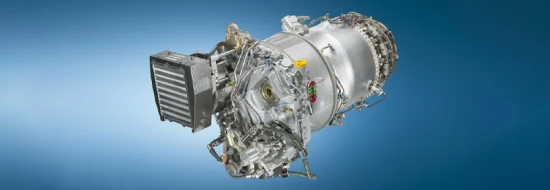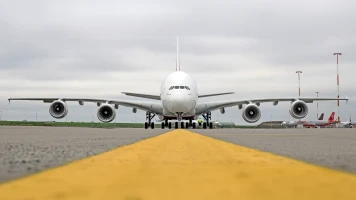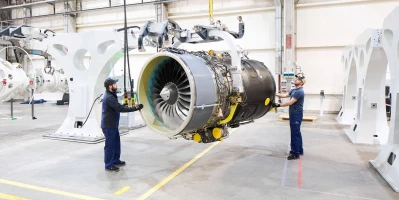aviation
The PW200: reporting for duty in police helicopter squadrons
The PW200 provides the power for the H135/EC135 police helicopters in Bavaria and Lower Saxony. The CSC in Ludwigsfelde is in charge of repairs.
author: Nicole Geffert | 4 mins reading time published on: 01.12.2019
author:
Nicole Geffert
has been working as a freelance journalist covering topics such as research and science, money and taxes, and education and careers since 1999.

It is the end of the line. On the climb up to the summit of Zugspitze, Germany’s highest mountain, a hiker shows signs of fatigue, having overestimated his strength. A steep slope forces him to admit defeat. His mobile phone fails to pick up a signal. Anxiously waiting for news at home, his family eventually reports him missing.
An aerial search and rescue operation is launched and an Airbus H135 helicopter from the Bavarian Police Helicopter Squadron takes off from Munich Airport, where the unit is stationed. Alongside the pilot and the flight technician, two members of the mountain rescue team are on board. The experienced crew locates the missing hiker at the edge of a snowfield and one of the rescuers is lowered down to him with a winch operated by the flight technician. Fortunately, the climber is not injured, merely exhausted. If he were badly injured, the task force would immediately alert the rescue coordination center to request a rescue helicopter with an emergency doctor on board. In this case, the man can be winched aboard, given first aid and airlifted away.
Peter Hauschild, technical operations manager in the Police Tactical Unit of the Bavarian Police Helicopter Squadron since 2008, reads the mission report the next morning. He and his team—a total of 14 members responsible for the airframe, engines and avionics—take care of the squadron’s eight H135 helicopters and 16 PW200 engines in the maintenance facilities in hangar 3, which have been certified by the German Federal Aviation Office (Luftfahrtbundesamt, LBA).
“The hiker had a lucky escape,” says Hauschild. He has also seen more critical missions, in thunderstorms with hail, for example, poor visibility because of fog or where the helicopter had to take off and land on a sloping mass of sand, gravel and stones. “In conditions like these, there is a risk of foreign objects getting into the engine and damaging the compressor blades, for example,” he says. As the squadron is forced to land off-piste now and then, the PW200 engines were fitted with an inlet barrier filter, or sand filter, as protection against erosion.
Detecting smoldering fires with a thermal imaging camera
Missions in alpine terrain are not on the agenda for Marvin Gereke, technical operations manager of the Lower Saxony Police Helicopter Squadron, stationed at Hannover-Langenhagen Airport, since 2017. Instead, he and his colleagues face very different challenges on the ground and in the air. In 2018, when a peat fire had to be controlled and extinguished on a Bundeswehr military site near Meppen, the EC135 P2 helicopters powered by PW200 engines were deployed to detect smoldering fires on the vast terrain from the air, to assist the fire departments.
“To this end, a gyro-stabilized thermal imaging camera is mounted on the outside of the helicopter, the Electro Optical System, or EOS for short,” Gereke explains. An EOS operator on board controls the complex device. While the pilot is responsible for flying the helicopter and communicating with air traffic control, the flight technician next to them in the cockpit heads the police operation. It’s their responsibility to take care of navigation, maintain radio contact with other police units and coordinate the collaboration between ground forces, the EOS operator and the pilot.
Gereke and his team ensure that the two EC135 P2 helicopters and the two McDonnell Douglas (MD) 902 Explorers, all equipped with PW200 engines and based in Hannover, are ready for service 24 hours a day, seven days a week: to locate missing or wanted persons, fly reconnaissance missions, provide support at large-scale events, or for training and advanced training flights. In the LBA-certified repair facility, they also carry out maintenance work on engines, such as repairs or the replacement of parts such as fuel injectors.
Whenever the PW200 engines need a complete overhaul, the police helicopter squadrons in Lower Saxony and Bavaria entrust their equipment to the Pratt & Whitney Canada Customer Service Centre Europe, or CSC for short, in Ludwigsfelde—a joint venture company between MTU Maintenance Berlin-Brandenburg and Pratt & Whitney Canada.
Longstanding collaboration of over 20 years
“We know that helicopter availability and around the clock operational readiness are crucial for our customers, especially those who fly on police operations or special missions,” says Ismael Rhissa Zakary, as of 1 July 2019 the CSC’s new Managing Director. “We offer them tailored, comprehensive long-term service solutions, including not just maintenance and overhaul, but also fast on-wing service and spare engines for accelerated return to service. The Bavarian and Lower Saxony police forces are longstanding customers of our fleet management service program.”
Some of the contracts have been in place since the late 1990s. “Our collaboration has grown over the last 20 years,” says Dr. Philipp Schumacher, Fleet Management Program Manager at the CSC. “We provide a reliable repair service for all PW200 engines powering helicopters operated by regional police forces in Germany. For example, during the 2015 G7 Summit in Bavaria, we provided important spare parts and engines in the vicinity of the police operation.”
The CSC performs overhaul of PW200 engines, which involves disassembling them in full and repairing them. Engines operate for approximately 500 flight hours per year. A major overhaul is due after around 4,000 flight hours, which equates to roughly every eight years. “We are extremely satisfied with the service—and with the PW200,” says Hauschild. “It’s robust, powerful and reliable.” Despite their obvious enthusiasm for helicopters and technology, Gereke und Hauschild both agree that their favorite part of the job is helping people. For them, to find a missing person safe and sound, whether that’s a child, somebody who is confused or a hiker, is always a good feeling.
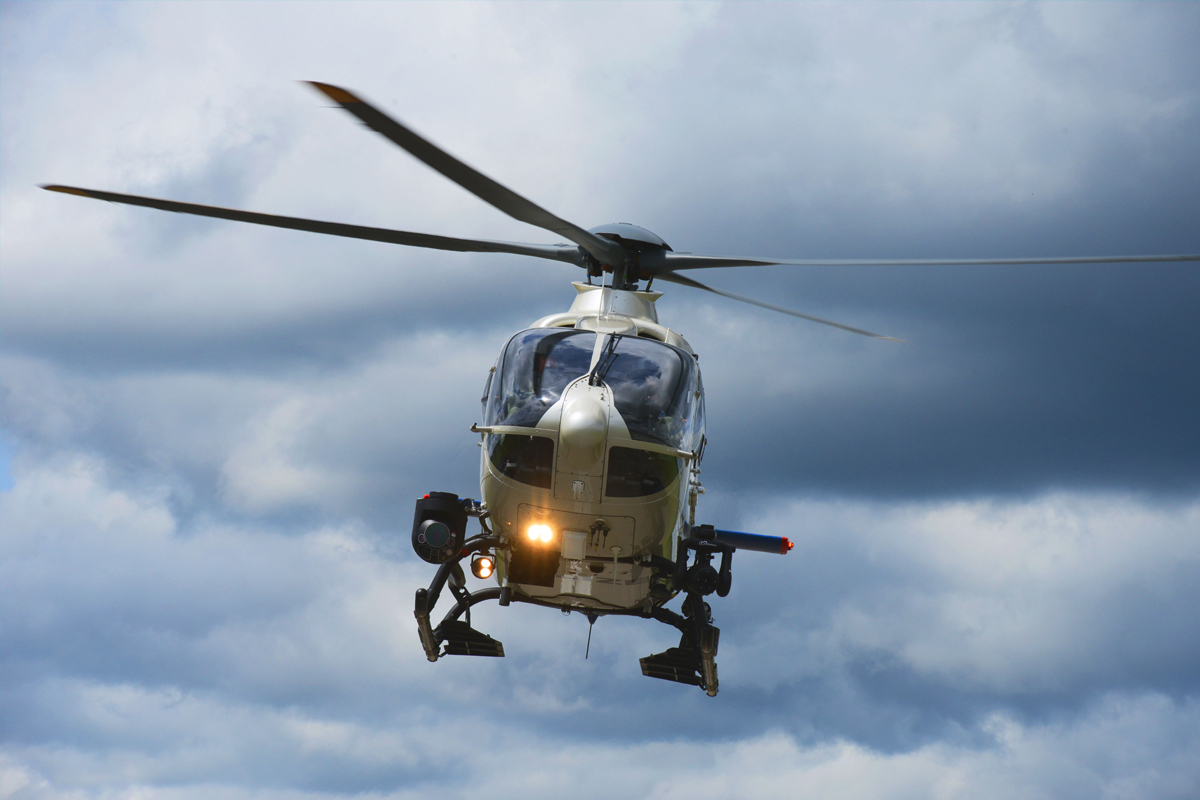
Bavarian Police Helicopter Squadron
In total, the Bavarian Police Helicopter Squadron operates a fleet of eight Airbus H135 helicopters powered by PW200 engines. Established in 1970, the unit is based at Munich Airport. Three helicopters are stationed at its Roth site. The squadron works closely with the rescue and civil protection services. As the only helicopter squadron of all regional police forces in Germany, it locates missing persons in alpine terrain and provides mountain rescue and emergency transport, day or night. Its equipment includes a winch with a 50-meter steel cable and a lifting capacity of 230 kilos, a tracking device to detect avalanche victims, and a double hoist hook to transport external loads or external water tanks (Bambi buckets), used to suppress forest fires in remote locations. In 2010, the squadron began replacing its Eurocopter EC135 P2s with eight H135 (formerly EC135 P3) helicopters, which offer an increased take-off weight and a greater range. In 2018, the squadron completed 2,925 missions, 953 of which were at night. It celebrates its 50th anniversary in 2020.
Lower Saxony Police Helicopter Squadron
The Lower Saxony Police’s helicopter squadron commenced operations at Hannover-Langenhagen Airport in 1971. Its sub-squadron in Rastede was founded almost four years later. At present, the fleet comprises two EC135 P2 helicopters, acquired in 2015, and two MD 902 Explorers, all powered by PW200 engines. The Langenhagen-based aircraft are on call 24 hours a day. Under normal circumstances, the helicopter in Rastede operates daily from 6 a.m. to 10 p.m. In 2017, the squadron completed more than 1,600 missions with over 1,150 flight hours.

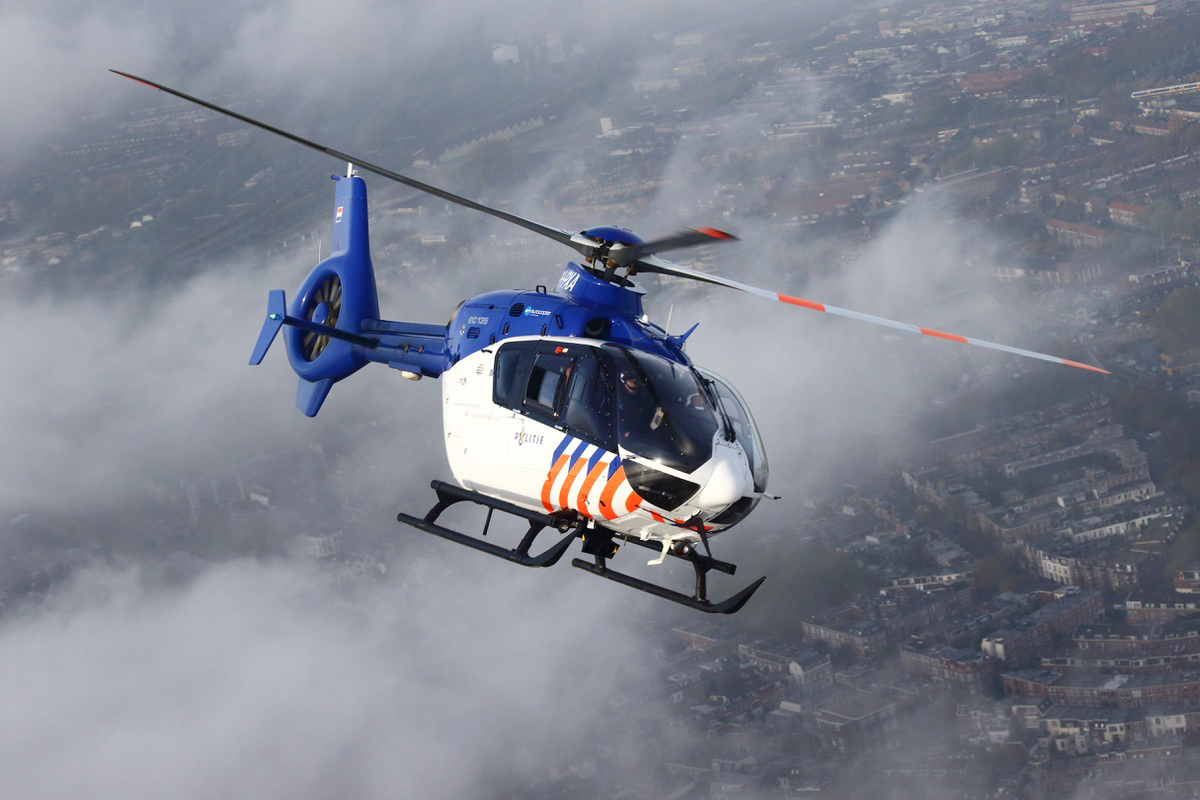
Dutch police
Along with other aircraft, the aviation branch of the Dutch police operates six EC135 P2 helicopters. In total, the PW200 engines of the EC135 P2 fleet have clocked up around 70,000 operating engine hours since 2009. The helicopters are mainly deployed to help in the prevention of high impact crime and search for missing persons. Their PW200 engines are maintained by the Dutch Police Maintenance department and repaired and overhauled by the Pratt & Whitney Canada Customer Service Centre Europe (CSC) at MTU Maintenance Berlin-Brandenburg. “Over the last ten years, the PW200 has achieved outstanding performance data and proven to be highly reliable,” says Ronald Uittenbogaard, Technical Manager of the Aviation Engineering team at the Dutch police.



